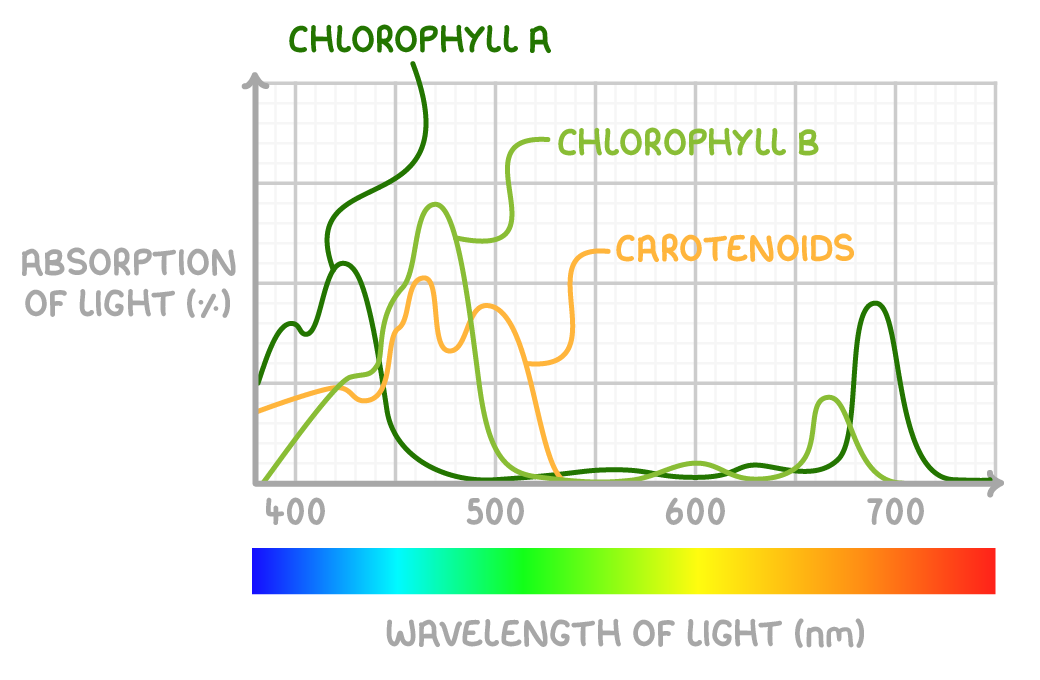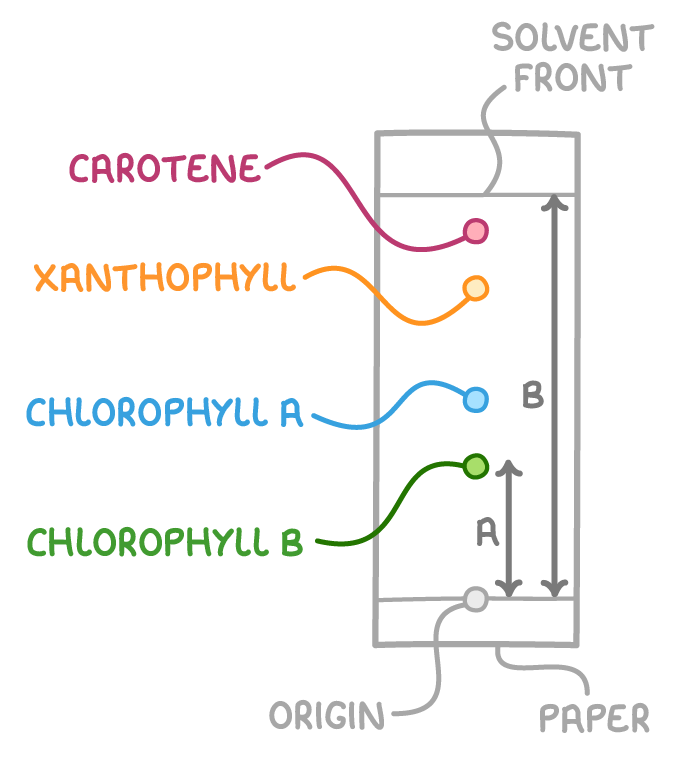Chloroplast Structure
This lesson covers:
- The function of chloroplasts
- The structure of chloroplasts
- The role of photosynthetic pigments in chloroplasts
The function of chloroplasts
Chloroplasts are the site of photosynthesis. They are organelles found in some algae and plant cells. In plants, they are mainly found in the mesophyll tissues of leaves.
The main roles of chloroplasts are:
- To absorb light energy to drive photosynthesis.
- To convert light energy into chemical energy.
The structure of chloroplasts
Chloroplasts are surrounded by a double membrane.

The interior of chloroplasts contains:
- Thylakoids - These flattened sacs contain complexes of pigments like chlorophyll in their membranes to absorb light for the light-dependent reaction.
- Grana - These are stacks of thylakoids.
- Lamellae - These are membranous extensions that connect thylakoids.
- Stroma - This is a fluid surrounding the thylakoids where the light-independent reaction occurs.
- Starch grains - These store sugars.
- Ribosomes - These are for protein synthesis within the chloroplast.
- Chloroplast DNA - This has genes that code for proteins involved in photosynthesis.
Photosynthetic pigments
Plants contain different photosynthetic pigments that can absorb energy from light.

The absorption spectrum above shows the range of wavelengths absorbed by the pigments in a chloroplast.
The main photosynthetic pigments you need to know are:
- Chlorophyll a - This is the main pigment that absorbs red and blue light and reflects green light (so most plants look green).
- Chlorophyll b - This is an accessory pigment mostly found with chlorophyll a in light-harvesting complexes.
- Xanthophylls and carotenoids - These absorb different wavelengths than chlorophyll, broadening the spectrum of light that can drive photosynthesis.
An action spectrum is a different type of graph that shows the rate of photosynthesis at different wavelengths of light.
Photosystems
Chloroplasts contain clusters of pigments called photosystems embedded in the thylakoid membranes.
Each photosystem has:
- A light-harvesting system - This contains pigments like chlorophyll a, chlorophyll b, and carotenoids.
- A reaction centre - This contains two chlorophyll a molecules.
The light-harvesting system absorbs light energy. This energy is transferred to the reaction centre. The reaction centre then emits high-energy electrons to drive the light-dependent reactions.
Chromatography and Rf values
Chromatography can be used to separate and identify the different photosynthetic pigments found in chloroplasts. It works because each type of pigment travels a different distance up the chromatography paper. This is shown in the chromatogram below.

The Rf value allows us to identify the pigments, as each pigment has a characteristic Rf value.
It is calculated as follows:
Rf=distance travelled by solvent from the origindistance travelled by pigment from the origin
For example, the Rf value for chlorophyll b would be Rf=distance Bdistance A